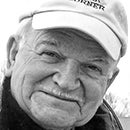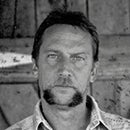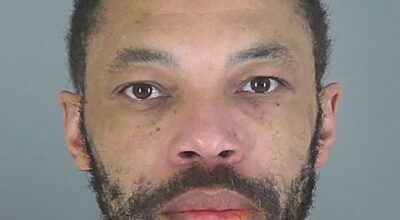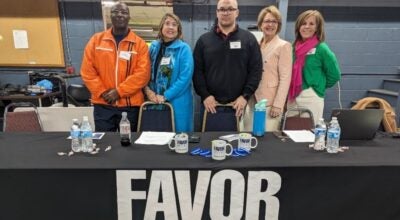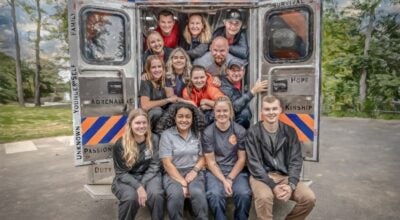Squire or Prince? Corner or Corners? Which is which?
Published 10:00 pm Friday, August 12, 2016
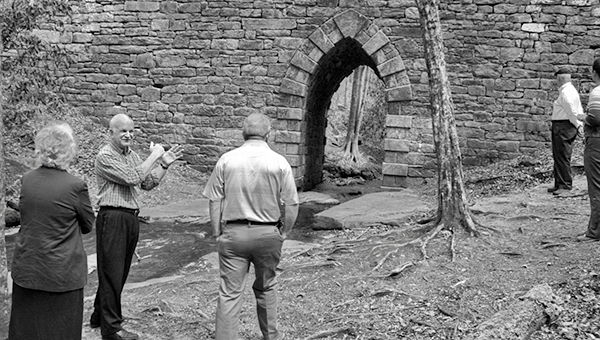
The living Squire, Dean Campbell, conducts tours around the Corner. This photo was taken at Poinsett’s Bridge, the oldest standing bridge in South Carolina, built in 1820. (photos submitted)
At a fundraising event for the Foothills Humane Society last year, the emcee introduced me as a Tryon Daily Bulletin columnist with the title, The Prince of Dark Corners. Several people immediately voiced objection, “No, he’s The Squire of Dark Corner.”
Confusion of the two titles is virtually an every day occurrence in the foothills area, and it has been brought about, in large measure, by NC and SC ETV broadcasting.
Prince…Squire. Dark Corners…Dark Corner. Which is which?
The controversy began on September 23, 2007, when “The Prince of Dark Corners,” a new film adaptation of a one-man play written by Sylva, N.C.’s Gary Carden, premiered at Western Carolina University’s Mountain Heritage Center.
Carden is a well-known dramatist, folklorist and storyteller whose works have been praised for their authenticity and insight into mountain culture. His dramatic works include “The Raindrop Waltz,” “Land’s End,” “Nance Dude” and “Birdell.” He has published “Mason Jars in the Flood,” “Belled Buzzards, Hucksters and Grieving Specters,” and the original “The Raindrop Waltz.” He was awarded the 2006 Brown-Hudson Folklore Award.
“The Prince of Dark Corners” dramatizes the life of ‘Major’ Lewis Redmond, a 19th century outlaw who was referred to as “the Jesse James of the Mountains.” He killed a revenue officer and fled to the rugged, virtually impenetrable mountains where North Carolina, South Carolina and Georgia converge, an area referred to as “Dark Corners.”
By the time he was captured in 1881, Redmond was the most famous outlaw in the country. He was regarded as a kind of Robin Hood-type hero in Southern Appalachia. The Northern press, however, portrayed him as a degenerate and cold-blooded murderer, according to records in WCU’s Mountain Heritage Center.
After serving his time for the revenue officer killing, he moved to Oconee County in South Carolina, and began making whiskey for the government.
When developing the character of Lewis Redmond in the stage play, Carden did it with one particular actor in mind: Milton Higgins, a Burnsville, N.C native who directs and performs in productions at the Burnsville Parkway Playhouse. His normal speaking voice was authentically akin to the way Lewis Redmond would have spoken, and the actor’s own thought processes were natural to the part.
When asked how much of Redmond’s dialogue in the play and film was based on actual fact, Carden guesstimated about 60 percent. The rest was included to achieve particular dramatic effects.
The new film was produced in conjunction with Sucker Punch Pictures, and began to appear on regional ETV in North and South Carolina right away. It’s still shown occasionally in both states.
Lewis Redmond, therefore, was the Prince of Dark Corners (the tri-state mountainous area) after the Civil War.
There is another film, a documentary produced in 2008 by Dark Corner Films, Inc., entitled “The Dark Corner,” which is still showing on South Carolina ETV and on the Documentary Channel. I am associate producer and lead storyteller of the documentary and have been called The Squire of Dark Corner since 1977.
This documentary presents a factual history of a unique mountainous area in the northeastern corner of Greenville County, S.C. Known as Glassy Mountain Township, this corner is the nucleus of the famous, yet infamous, Dark Corner area, which spreads from upper Spartanburg County north to Tryon and the Lake Lanier area, across the Hogback-to-Glassy Mountain front and back ranges, south into Highland Township and west into Saluda Township.
The Glassy Mountain Township was first called the Dark Corner (note: singular) back in 1832. Congress had passed tariffs that were good for Northern industries, but were devastating to the plantation economies of the Southern states. The Nullification Act of 1832 asked South Carolinians to nullify the tariffs and not be governed by them.
The state voted 82 percent for nullification, but the precinct box for Glassy Mountain Township voted 169 to 1 against nullification. Many of the mountain residents were former Revolutionary War soldiers, who were given land grants in the area in 1784 to compensate them for services in the war that had gone unpaid. They had fought hard to get this nation together and were staunch Unionists. The Nullifers said, with this lopsided vote, that “the light of nullification would never shine in that corner of Greenville County.”
For the next 150 years or more, the area gained notoreity for its Appalachian moonshine, mystery and mayhem, aided by an accommodating media. City fathers in Upstate cities and towns pointed to the backwardness of the Dark Corner area, and made sure to tell the world that their city dwellers were “not like them.” Yet, at the same time, Gowensville was the cultural center of the area with one of the Upstate’s foremost educational institutions, the Gowensville Seminary, operating in that same Dark Corner area from 1858 to 1890.
South Carolina designated its Highway 11, traversing the state’s northwestern mountains and foothills from Gaffney to the Georgia border, as the Cherokee Foothills Scenic Highway in 1983. In its center portion, the highway splits the Dark Corner area virtually in half at the foot of its front range. The highway was widened in the early 1970s and eventually was designated a National Scenic Byway in 1999.
When I returned to South Carolina in 1974 after a 20-year absence, I was concerned that increased travel on the highway through the Dark Corner might create the same type of a negative backwoods “hillbilly”caricature image, which tainted Highway 7 in the scenic Ozarks of Arkansas in the 1950s, following the opening of a “Dogpatch USA” theme park in Harrison. The image was more aptly described as “poor white trash.”
This was not going to happen to my beloved Dark Corner, which has an educational legacy going all the way back to 1809! I set out on a one-man, promotional campaign to tell the full story of the Dark Corner—moonshine, blood fueds, hot tempers, hot lead, yet producing 27 ministers of the gospel, two foreign missionaries, outstanding doctors, lawyers and businessmen, a private seminary, even a private industrial high school.
For my successful efforts in publishing photographs and articles and encouraging other authors and researchers to do so, the late Jim McAllister, columnist and feature writer for The Greenville News, dubbed me The Squire of Dark Corner. That initial effort has expanded into two books, guest lectures, teaching of Dark Corner history classes at Clemson and Furman Universities in their OLLI Lifelong Learning Programs, over 140 Twice-told Tales and Ballads of the area, and guided tours for over 28 years.
Dean Campbell, therefore, is The Squire of Dark Corner (the singular northeastern corner of Greenville County), in the present day.
And that is the who, what and how of which is which.



